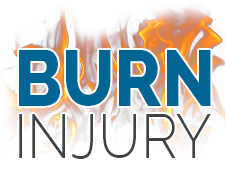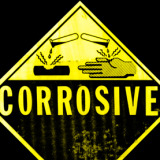Workplace Chemical Burns
Chemical burns are one of the most common burn hazards present in workplaces. Chemical burns can cause severe injuries and lasting pain. Employers are responsible for mitigating employee’s exposure to chemicals that may cause burns and for implementing procedures to mitigate the risk of employees being burned by hazardous chemicals which must be used. Failure to ensure the safety of employees while in the workplace may result in Workers’ Compensation claims and penalties for the employer.
Identifying Chemical Burn Hazards
Exposure to strong acids and bases can cause considerable burns even after a very short time. It is important for employers to identify chemicals that may cause burn injuries. These chemicals should be clearly labeled and stored in a specific area.
Chemicals commonly used in workplaces that may cause burn injuries include:
- Nitric acid
- Phosphoric acid
- Hydrofluoric acid
- Hydrochloric acid
- Muriatic acid
- Sodium hydroxide
- Potassium hydroxide
- Sodium hypochlorite
- Calcium hypochlorite
- Ammonia
Preventing Chemical Burns
In order to prevent chemical burns, employees should be educated on proper use and storage of all hazardous chemicals. Most workplaces utilize material safety data sheets to have a record of the composition of all hazardous chemicals. Employees are generally required to learn basic information regarding common chemicals which will be used and sign a waiver stating that this information is understood.
Protective Clothing
Employees should also have access to protective clothing that is designed to prevent chemical burns from the specific chemicals being used in the workplace. Safety gloves are common, but employees that work with larger amounts of hazardous chemicals may require face masks, safety glasses, and jackets or aprons to protect skin from the chemicals. Failure to provide adequate protective clothing may be considered employer negligence, which can result in fines and penalties for the employer.
Burn Treatment
In addition to taking precautions to prevent burns, employers should also have safety procedures and first aid supplies in place to mitigate injuries from chemical burns. This may include eye washing stations, burn cream, and gauze or other protective covering. Employees should be trained on the proper use of equipment and supplies as part of job training.
Workers’ Compensation Claims
If an employee was injured by chemicals while on the job, the employee may file a worker’s compensation claim. If the claim is approved the employer, the employee’s medical costs and wages lost due to the injury may be covered. If a workplace fights against a workers’ compensation claim, an employee may benefit from hiring a skilled attorney. The attorney will assist the employee in proving that the chemical burn was caused by employee negligence or inherent hazards and not by the employee’s actions.
Sources:
“Effects of Skin Contact with Chemicals.” Centers for Disease Control and Prevention. Centers for Disease Control and Prevention, 1 Jan. 2011. Web. 16 Sept. 2014. <http://www.cdc.gov/niosh/docs/2011-200/pdfs/2011-200.pdf>
“Focus On Safety: Workplace Burns.” Safe Solutions. Safe Solutions, 3 Feb. 2014. Web. 16 Sept. 2014. <http://www.saferemployees.com/?p=736>
Mian, M.A.H., and R.F. Mullins. “Workplace-Related Burns.” Annals of Burns and Fire Disasters 24.2 (2011): 89-93. PMC. Web. 16 Sept. 2014. <http://www.ncbi.nlm.nih.gov/pmc/articles/PMC3230153/>
Schlatter, Nelson. “Putting the Lid on Chemical Burns.” Occupational Health and Safety. Security, Safety, and Health Group, 1 Jan. 2011. Web. 16 Sept. 2014. <ohsonline.com/Articles/2011/01/01/Putting-the-Lid-on-Chemical-Burns.aspx?Page=2>














